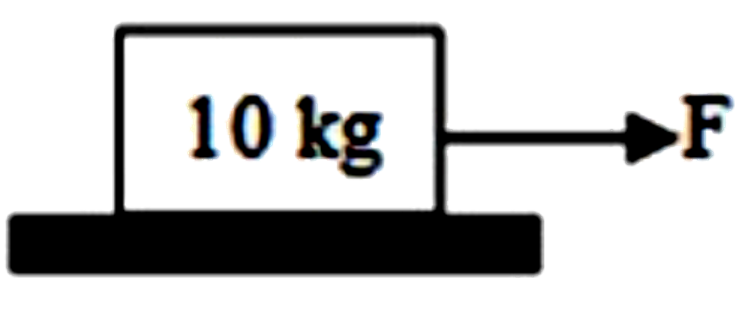A Newtonian fluid fills the clearance between a shaft and a sleeve. When a force of 800 N is applied to the shaft, parallel to the sleeve, the shaft attains a speed of 2cms−1. If a force of 2.4 kN is applied instead, the shaft would move with a speed of
2cms−1
15cms−1
6cms−1
none of these
The correct Answer is:C
To solve the problem, we will use the relationship between force and velocity for a Newtonian fluid. According to Newton's law of viscosity, the shear stress (τ) is proportional to the rate of shear strain (velocity gradient).
1. Identify the Given Values:
- Initial Force (F₁) = 800 N
- Initial Velocity (V₁) = 2 cm/s
- New Force (F₂) = 2.4 kN = 2400 N
2. Understand the Relationship:
- For a Newtonian fluid, the relationship between force and velocity is linear. This means that:
F1F2=V1V2
- Where:
- F1 is the initial force,
- F2 is the new force,
- V1 is the initial velocity,
- V2 is the new velocity we need to find.
3. Substitute the Known Values:
- Plugging in the values we have:
8002400=2V2
4. Cross-Multiply to Solve for V2:
- Cross-multiplying gives:
800⋅V2=2400⋅2
- Simplifying the right side:
800⋅V2=4800
5. Isolate V2:
- Now, divide both sides by 800:
V2=4800800=6 cm/s
6. Conclusion:
- The new velocity V2 when a force of 2.4 kN is applied is 6 cm/s.
- Initial Force (F₁) = 800 N
- Initial Velocity (V₁) = 2 cm/s
- New Force (F₂) = 2.4 kN = 2400 N
- For a Newtonian fluid, the relationship between force and velocity is linear. This means that:
F1F2=V1V2
- Where:
- F1 is the initial force,
- F2 is the new force,
- V1 is the initial velocity,
- V2 is the new velocity we need to find.
- Plugging in the values we have:
8002400=2V2
- Cross-multiplying gives:
800⋅V2=2400⋅2
- Simplifying the right side:
800⋅V2=4800
- Now, divide both sides by 800:
V2=4800800=6 cm/s
- The new velocity V2 when a force of 2.4 kN is applied is 6 cm/s.
Similar Questions
A force F1 of 500 N is required to push a car of mass 1000 kg slowly at constant speed on a leveled road. If a force F2 of 1000N is applied, the acceleration of the car will be :
View SolutionA force F=2t2 is applied to the cart of mass 10 Kg, initially at rest. The speed of the cart at t = 5 s is -
 View Solution
View Solution
Knowledge Check
- Question 1 - Select One
A 10 N force is applied on a body which produces in it an acceleration of 1 m/s2. The mass of other body is
A10 kgB5 kgC15 kgD20 kg
A constant retarding force of 50 N is applied to a body of mass 20 kg moving initially with a speed of 15ms−1. How long does the body take to stop ?
View SolutionWhen a force of 80 N is applied on a uniform steel wire, its free end elongates by 1.2 mm. Find the energy stored in the wire.
View SolutionA constant retarding force of 50 N is applied to a body of mass 20 kg moving initially with a speed of 15ms−1 How long does the body take to stop ?
View SolutionA block of mass 2 kg rests on an inclined plane which makes an angle of 30∘ with the horizontal. The coefficient of friction between the block and the surface is √3/2. (i) What force should be applied on the block so that it moves down without any acceleration ? (ii) What force should be applied on the block so that it moves up without any acceleration ? (iii) Calculate the ratio of the powers in the above two cases if the block moves with uniform speed in both the cases.
View SolutionA 30kg block rests on a rough horizontal surface A force of 200N is applied on the block The block acquires a speed of 4m/s starting from rest in 2s What is the value of coefficient of friction ? .
View Solution(Answer the following questions briefly and to the point :)
A constant retarding force of 100 N is applied to a body of mass 10 kg moving initially with a speed of 30 ms−1. What is the retardation of the body ?View SolutionA 10 kg collar P slides with negligible friction on the fixed vertical shaft. When the collar is released from rest at the bottom position shown, it moves up the shaft under the action of the constant force F = 200 N applied to the cable. The position of the small pulley at B is fixed. Find the spring constant k (in k−N/m) which the spring must have if its maximum compression is to be limited to 0.4 m.
 View Solution
View Solution

